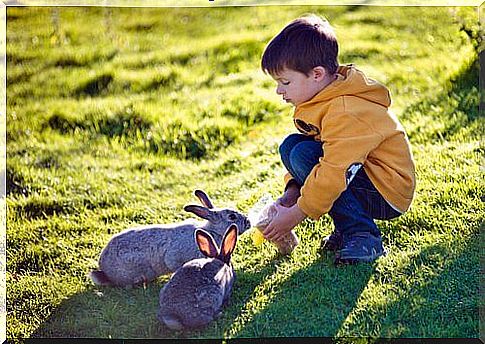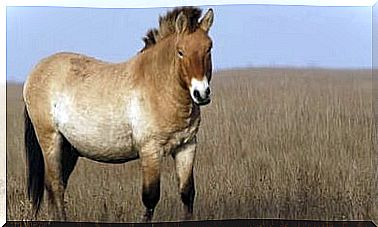How To Teach The Love Of Animals To Children

Parents have the obligation to teach their children to respect nature and all forms of life. However small and insignificant it may seem. Starting with pets, it is necessary to inspire and foster love for animals in the hearts of those who, one day, will take over the reins of our world. Here are some useful tips to help you develop a love for animals in children .
Love for animals: how to teach it to the youngest?
There are things that seem logical and even obvious to adult people. But that, at some point in life, someone showed us and taught us to appreciate. In the case of love for animals, it is a habit that must be cultivated both from the earliest years of age. If you already have children at home or are pregnant, here are 5 steps to follow to make them grow in full respect of nature and the environment:
1. Set a good example
It is very important, as a first step, that your children see you do what you want them to do. You can’t tell them you love animals if you abuse a dog on the street or spray gallons of DDT to get rid of a single night moth …
Demonstrating consistency between what you say and your actions is the best lever to trigger learning through emulation. When it comes to the love of animals, children should see you treat any living thing with care and concern. Starting from domestic animals, up to wild ones, insects, birds, fish… All those with whom you will have the good fortune to come across.

2. Cast out fears
In addition to educating their children to respect and coexist positively, and peacefully, with animals, it is also of fundamental importance to drive away and possible negative feelings and emotions. For example, if you are afraid of a spider and yell when you see one in front of your child, he or she is likely to develop a certain phobia as well.
It is essential to work on yourself, to control impulses and to be able to make sure that your fears, your little traumas, do not relapse or involve the so malleable and influential personality of the little ones of the house.
3. Give them the freedom to experiment
Another way to foster a love for animals in your children is to allow them to make contact with these extraordinary living beings. Without giving wrong information or “suggesting” unjustified fears. Take some simple precautions, perhaps observing in advance the possible behavior of a particularly grumpy or aggressive dog or cat.
Take your children outdoors, arouse their curiosity, making them appreciate even the smallest insects and other unusual animals. Ants, snails, frogs, lizards. Teach them how to approach a neighbor’s dog, asking permission, having their hand sniffed, and managing contact with peace of mind.
But beware, we are not talking about taking them to the zoo and seeing the animals locked up in cages that recreate a fake and artificial habitat . Some parents believe this has some didactic value. On the contrary, the message that passes is another: man has dominion over everything and can control any species. Even tigers and dolphins.

4. Teach them to be responsible
If you have pets at home, children can certainly participate in their care and maintenance. Obviously with tasks proportionate to their age. Simple things like filling the water bowl, cleaning up the litter, or putting on a leash to go to the park, can be the first step in teaching your child to handle their first responsibilities.
As you grow up, you will gradually increase these tasks. A walk in the park, a visit to the vet, bathing the animal, cleaning the kennel or litter box, vacuuming the floor to remove hair, etc.
5. Take advantage of the leverage of fun
Mass culture offers significant positive insights into the relationship between children and the Animal Kingdom . Cartoons can teach a lot by establishing simple concepts of affection and respect every day. Once the movie or cartoon is finished, you can take the opportunity to talk to your child about his plot, stimulating his critical point of view.
Perhaps it is superfluous to mention them, but there are many animated films that you can see together: Finding Nemo , the Ice Age , the Land of the Bears , Madagascar . To these you can add documentaries made by famous production companies, all over the world.
Internet videos can also be of great help, as long as they are chosen and played under your supervision. And of course, there are always books that include photographs or images to learn about different species of remote ecosystems such as the North Pole, the jungle or the desert.









